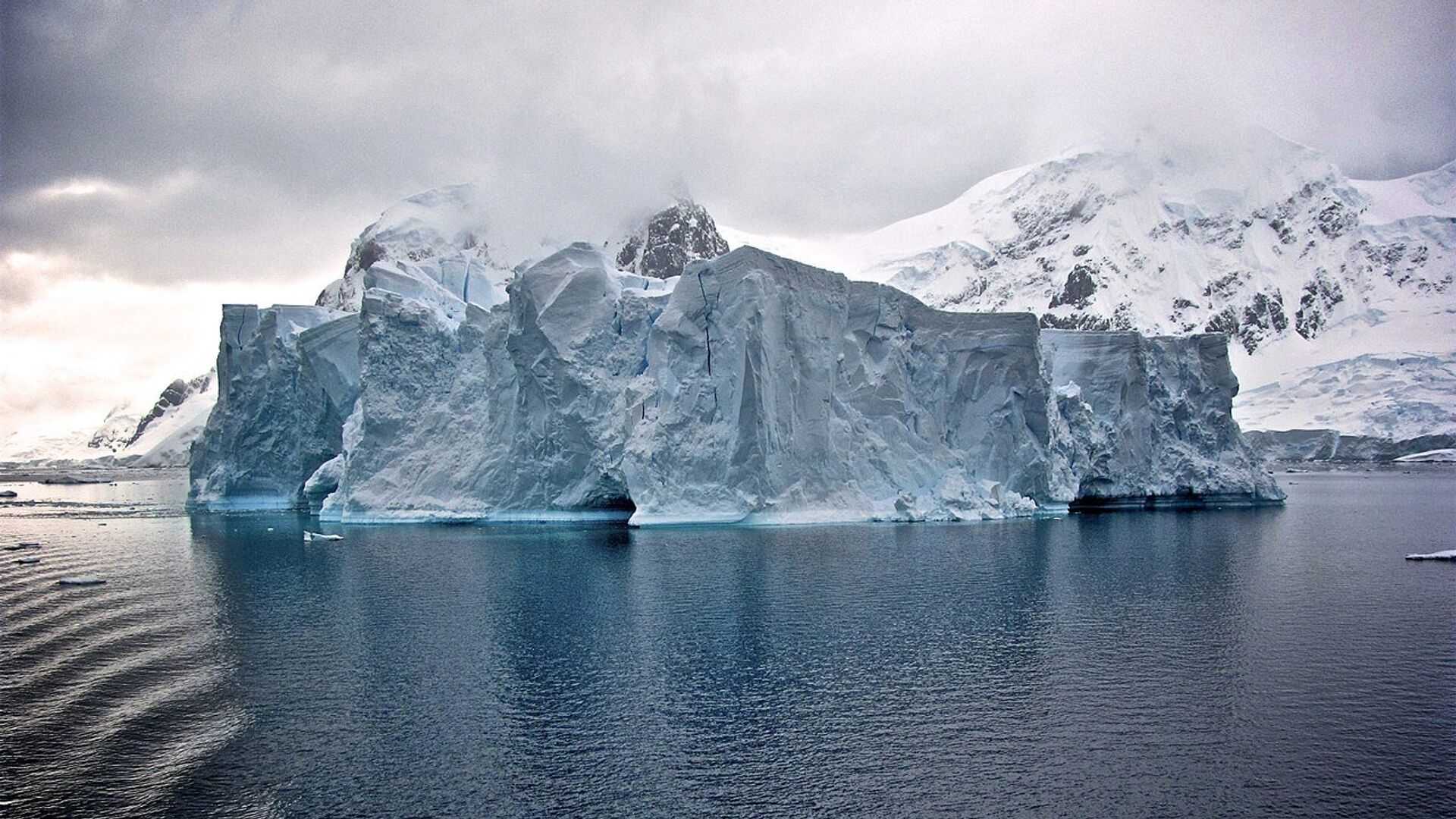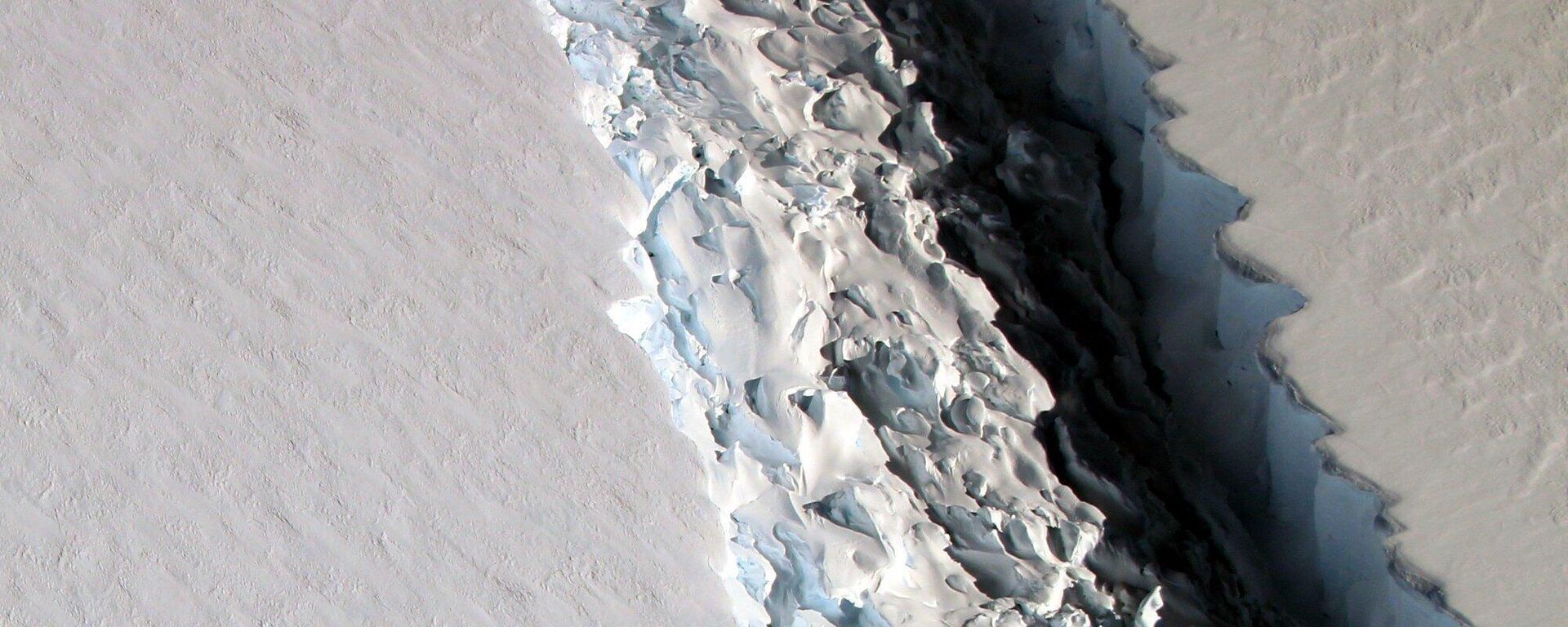https://sputnikglobe.com/20220510/vast-ancient-lake-found-hidden-deep-beneath-antarctic-ice-1095406602.html
Vast Ancient Lake Found Hidden Deep Beneath Antarctic Ice
Vast Ancient Lake Found Hidden Deep Beneath Antarctic Ice
Sputnik International
The lake resides in a deep canyon below the ice and has a layer of sediment at its bottom that may have been accumulating there for a long time. 10.05.2022, Sputnik International
2022-05-10T15:46+0000
2022-05-10T15:46+0000
2022-05-10T15:46+0000
science & tech
antarctica
ice
lake
discovery
https://cdn1.img.sputnikglobe.com/img/106480/13/1064801392_0:41:1280:761_1920x0_80_0_0_ff073d288552cff407deecdb45048653.jpg
A team of researchers led by Shuai Yan, a geophysicist from the University of Texas at Austin, has discovered what appears to be a massive lake of liquid water hidden beneath the ice sheet in Antarctica.According to ScienceAlert, the so-called Lake Snow Eagle is about 42 kilometres long and 15 kilometres wide, and is located about 3.2 kilometres below the ice sheet. The amount of water contained in the 200-metre deep lake is estimated at about 21 cubic kilometres.Don Blankenship, a geophysicist from the University of Texas at Austin's Institute for Geophysics, has also explained that the lake is "likely to have a record of the entire history of the East Antarctic Ice Sheet, its initiation over 34 million years ago, as well as its growth and evolution across glacial cycles since then".The lake, which resides in a 1.6-kilometre deep canyon, has a layer of sediment and its bottom that has apparently been accumulating there "over a very long time, potentially taking us through the period when Antarctica had no ice at all, to when it went into deep freeze", as glaciologist Martin Siegert from Imperial College London put it.The research team now suggests establishing a station near the lake in order to study that body of water further and to procure samples of the sediment that resides at the lake’s bottom, the media outlet notes.
https://sputnikglobe.com/20220415/scientists-believe-melting-of-antarcticas-large-ice-shelf-could-be-caused-by-rivers-in-the-sky-1094773403.html
antarctica
Sputnik International
feedback@sputniknews.com
+74956456601
MIA „Rossiya Segodnya“
2022
News
en_EN
Sputnik International
feedback@sputniknews.com
+74956456601
MIA „Rossiya Segodnya“
Sputnik International
feedback@sputniknews.com
+74956456601
MIA „Rossiya Segodnya“
science & tech, antarctica, ice, lake, discovery
science & tech, antarctica, ice, lake, discovery
Vast Ancient Lake Found Hidden Deep Beneath Antarctic Ice
The lake resides in a deep canyon below the ice and has a layer of sediment at its bottom that may have been accumulating there for a long time.
A team of researchers led by Shuai Yan, a geophysicist from the University of Texas at Austin, has discovered what appears to be a massive lake of liquid water hidden beneath the ice sheet in Antarctica.
According to ScienceAlert, the so-called Lake Snow Eagle is about 42 kilometres long and 15 kilometres wide, and is located about 3.2 kilometres below the ice sheet. The amount of water contained in the 200-metre deep lake is estimated at about 21 cubic kilometres.
Don Blankenship, a geophysicist from the University of Texas at Austin's Institute for Geophysics, has also explained that the lake is "likely to have a record of the entire history of the East Antarctic Ice Sheet, its initiation over 34 million years ago, as well as its growth and evolution across glacial cycles since then".
"Our observations also suggest that the ice sheet changed significantly about 10,000 years ago, although we have no idea why", he added.
The lake, which resides in a 1.6-kilometre deep canyon, has a layer of sediment and its bottom that has apparently been accumulating there "over a very long time, potentially taking us through the period when Antarctica had no ice at all, to when it went into deep freeze", as glaciologist Martin Siegert from Imperial College London put it.
"We don't have a single record of all those events in one place, but the sediments at the bottom of this lake could be ideal", Siegert remarked.
The research team now suggests establishing a station near the lake in order to study that body of water further and to procure samples of the sediment that resides at the lake’s bottom, the media outlet notes.


